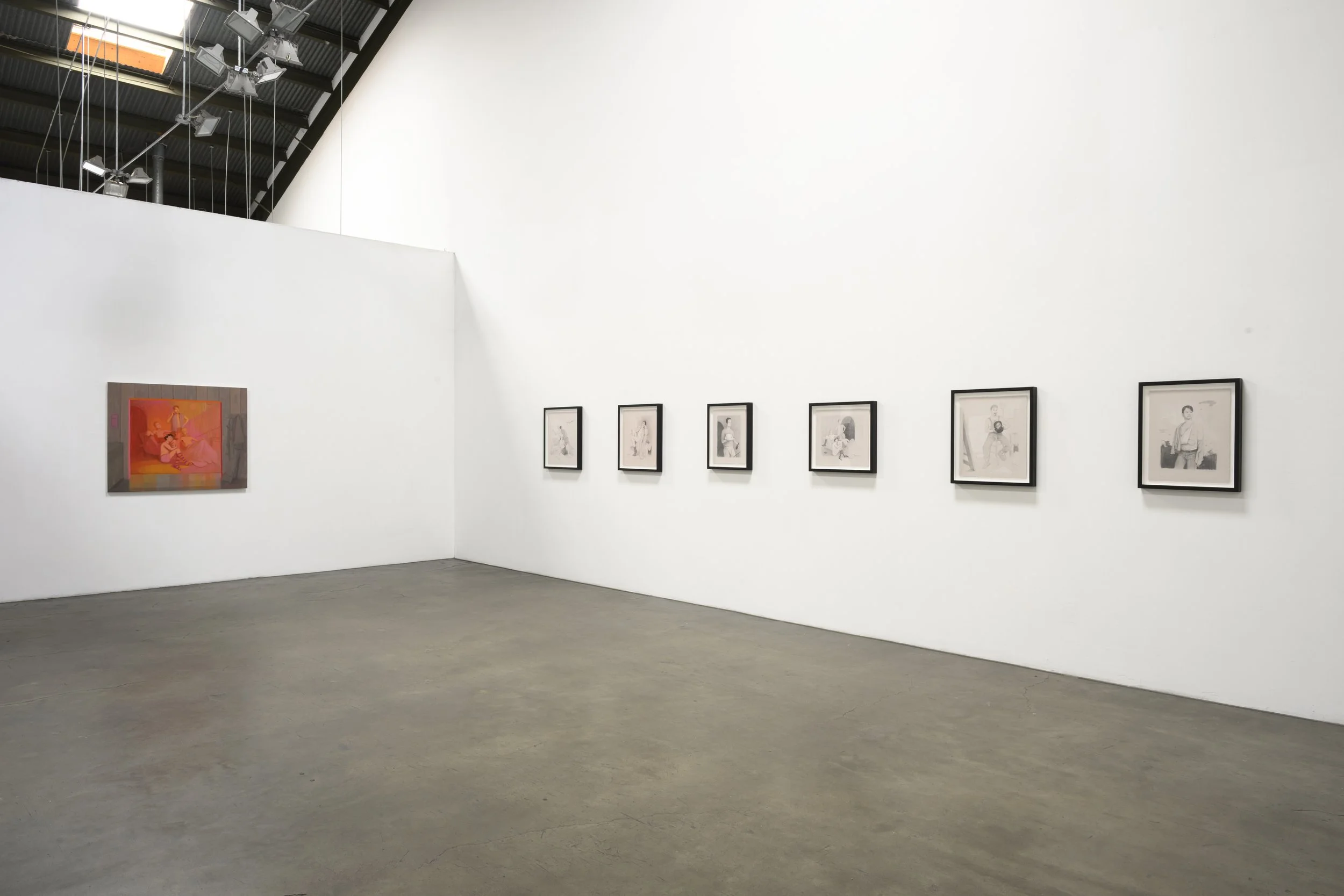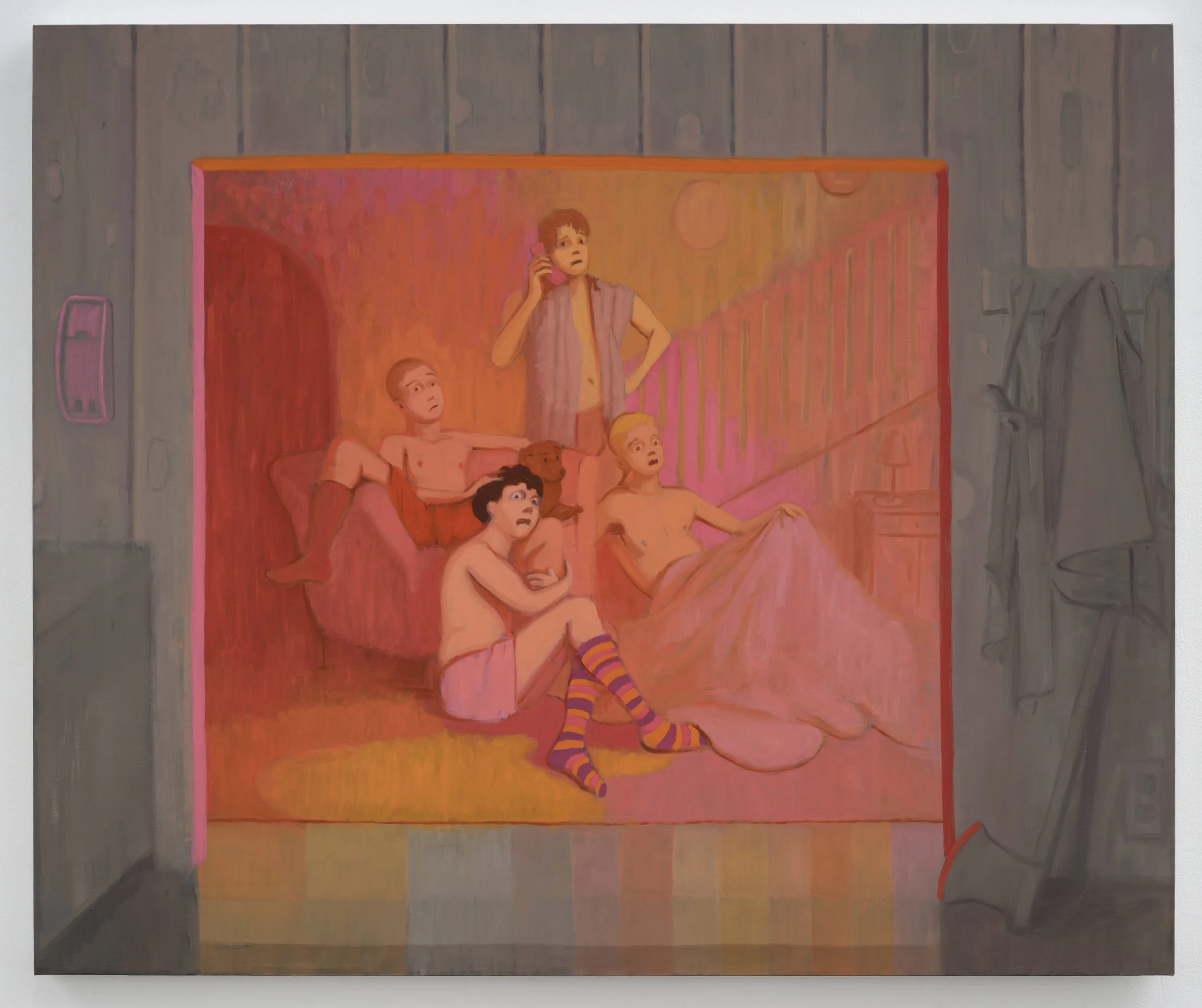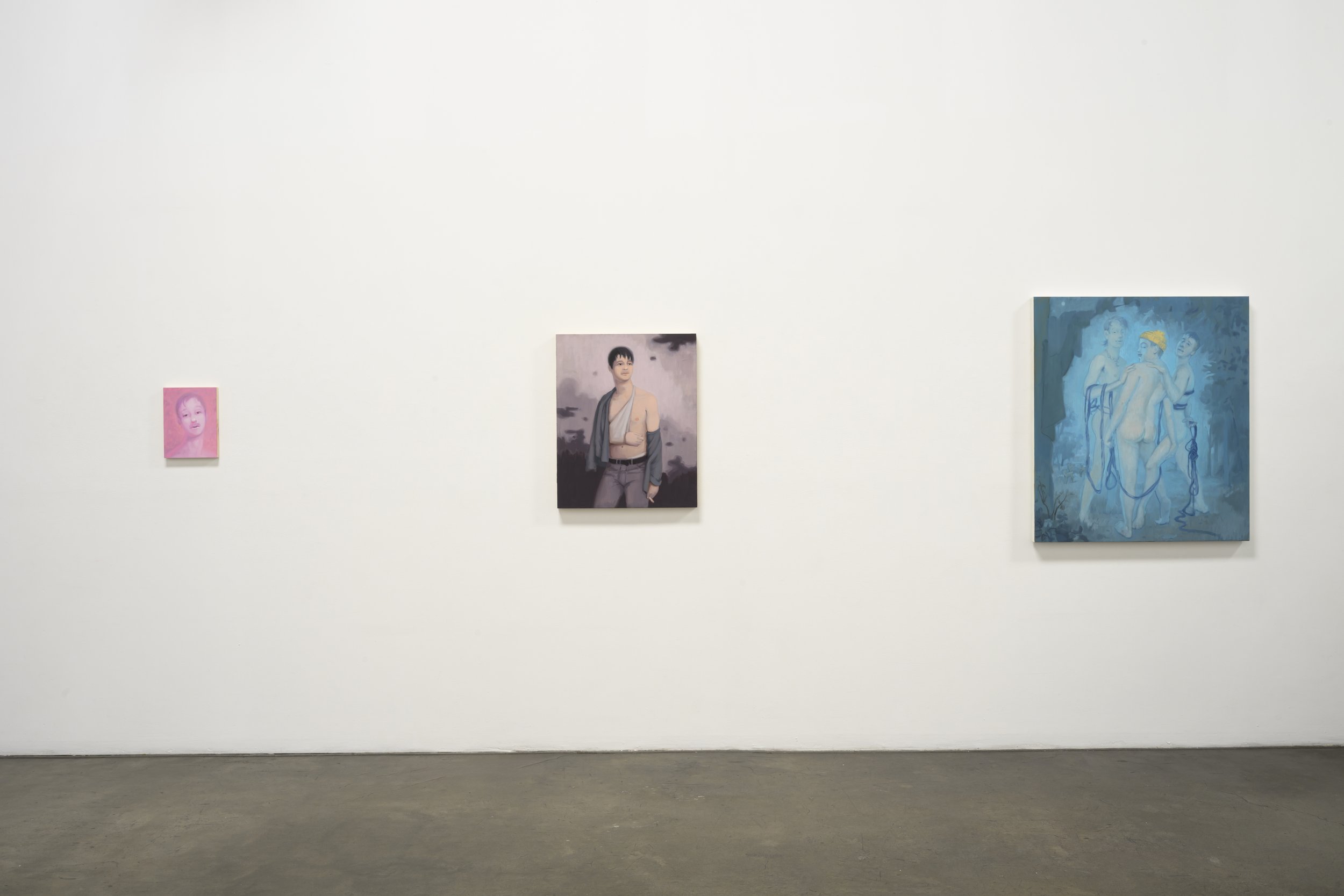Review: A Queer Twist on Classic Narratives
In his first solo exhibition with Richard Heller Gallery, New York-based artist Kyle Coniglio invites viewers into a world where intimacy, vulnerability, and horror intertwine with a vibrant visual language. The exhibition’s title, “No More I Love You’s” is borrowed from Annie Lennox’s haunting 1995 track, and offers a bittersweet backdrop, resonating with both personal and collective emotions in a time marked by uncertainty and unease.
Coniglio’s work, which merges fictional narrative with art history, confronts the viewer with a space where queer figuration finds a place in the grandeur of Baroque and Rococo traditions. With a unique sensibility, he brings together the old and the new—drawing upon Western painting techniques while channeling contemporary experiences of love, loss, and alienation.
“I’m interested in things going a little wrong, the moments people don’t share on Instagram, because as a chronically single person, that’s most of my queer experience,” Coniglio explained in a recent interview. In his painted worlds, nothing is pristine or perfectly curated. Instead, his figures stand in moments of quiet disarray, whether it’s a character on the phone or a distorted reflection of self in the mirrored space of history. His "movie night" franchise paintings, including one that nods to the popular TV show Scream Queens, offer a playful, campy approach to horror, reminding us that vulnerability is often met with terror.
It is through this lens that Coniglio creates his compositions—drawing on a close-knit community of artists that have helped shape his practice over the years. “Relationships with fellow artists are extremely important,” he says. The dialogues within his creative circle have not only refined his work but also shaped his understanding of how relationships impact art, both in theory and in practice. This sense of interconnectedness, where feedback and shared experiences drive artistic growth, is woven into the very fabric of his paintings. In works such as Cast Trio (2025), we see three male figures in repose, captured in a moment that hovers between recovery and leisure. Their postures suggest vulnerability and reflection, but the atmosphere is one of quiet intimacy, where the boundaries of individual experience seem blurred by the presence of one another. This nuanced portrayal of male figures reflects Coniglio’s ongoing exploration of emotional states, and his ability to render both physical and psychological landscapes in a way that feels immediate and deeply personal.
Coniglio’s color palette—ranging from vibrant oranges to cooling blues—serves as another emotional cue, directing the narrative’s tone with each brushstroke. In Ghost Throuple (2025), the dominant cool blues evoke a sense of melancholy and emotional distance, creating an atmosphere of introspection. However, the painting is punctuated by a striking yellow beanie worn by the subject in the middle, its warm hue drawing attention and adding an element of contrast that sharpens the emotional tension. The limited color choices Coniglio employs are purposeful; for him, color acts as a character in its own right, capable of expressing mood, atmosphere, and time of day in ways that words cannot. His use of light—dramatic, exaggerated, and often theatrical—adds depth to the work, immersing viewers in the emotionally charged world of his figures, where the subtle interplay of color and light evokes a palpable sense of both isolation and connection.
While Coniglio’s works may initially recall the opulence and grandeur of historical European painting, his approach is distinctly subversive, reinterpreting these classical techniques through a queer lens. His paintings, along with his intimate drawings on paper, explore the often-overlooked complexities of queer existence, capturing the raw, uncomfortable moments that are messy, intimate, and real. In works like Waiting and Afternoon (both 2025), Coniglio revisits iconic poses found throughout art history, yet recontextualizes them with a contemporary sensibility. Beneath the surface of his work, where moments of darkness and tension lurk, there is an undeniable playfulness—an undercurrent of humor that infuses even the most intense scenes, offering a balance of lightness and depth that resonates with his unique perspective.
In the end, Coniglio’s exhibition is about much more than what we see on the canvas. It’s about how art, like relationships, unfolds over time. His exploration of vulnerability, queerness, and intimacy echoes the fragility of the human condition, reminding us that, in the face of uncertainty, beauty and horror are often intertwined.
Kyle Coniglio’s “No More I Love You’s” is on view at Richard Heller Gallery, Los Angeles, through June 15, 2025.




